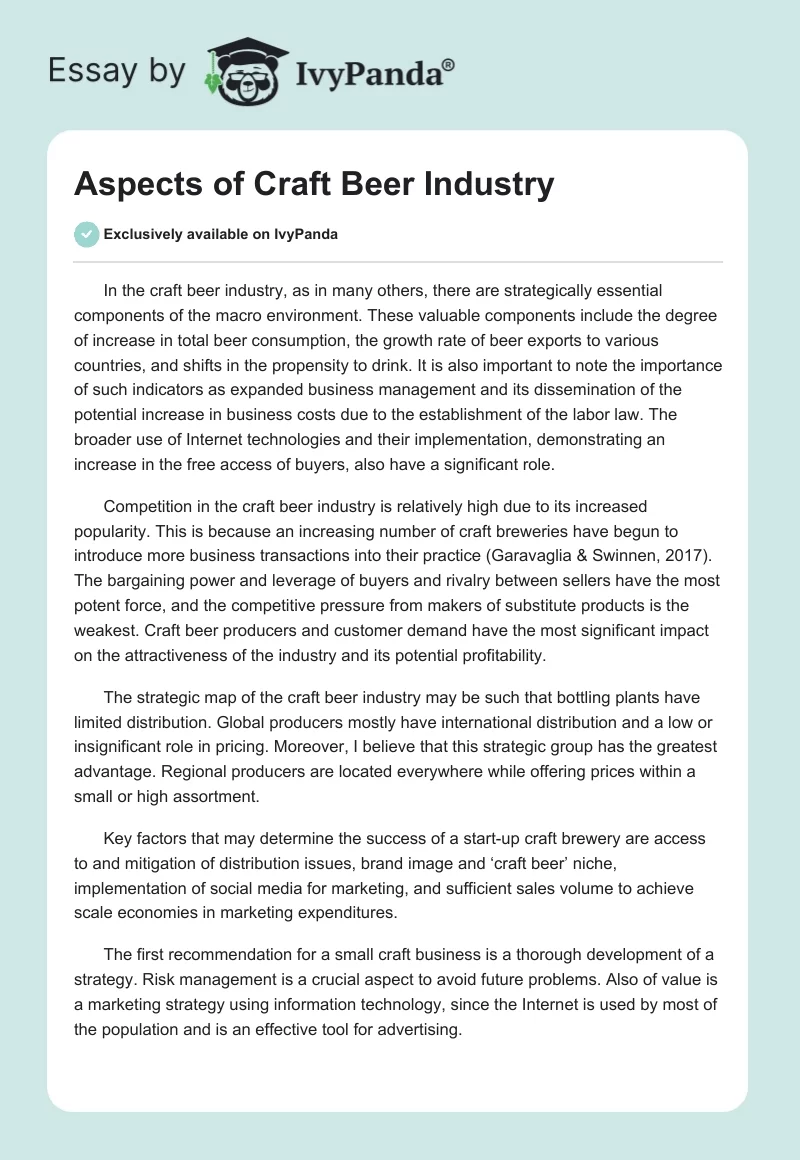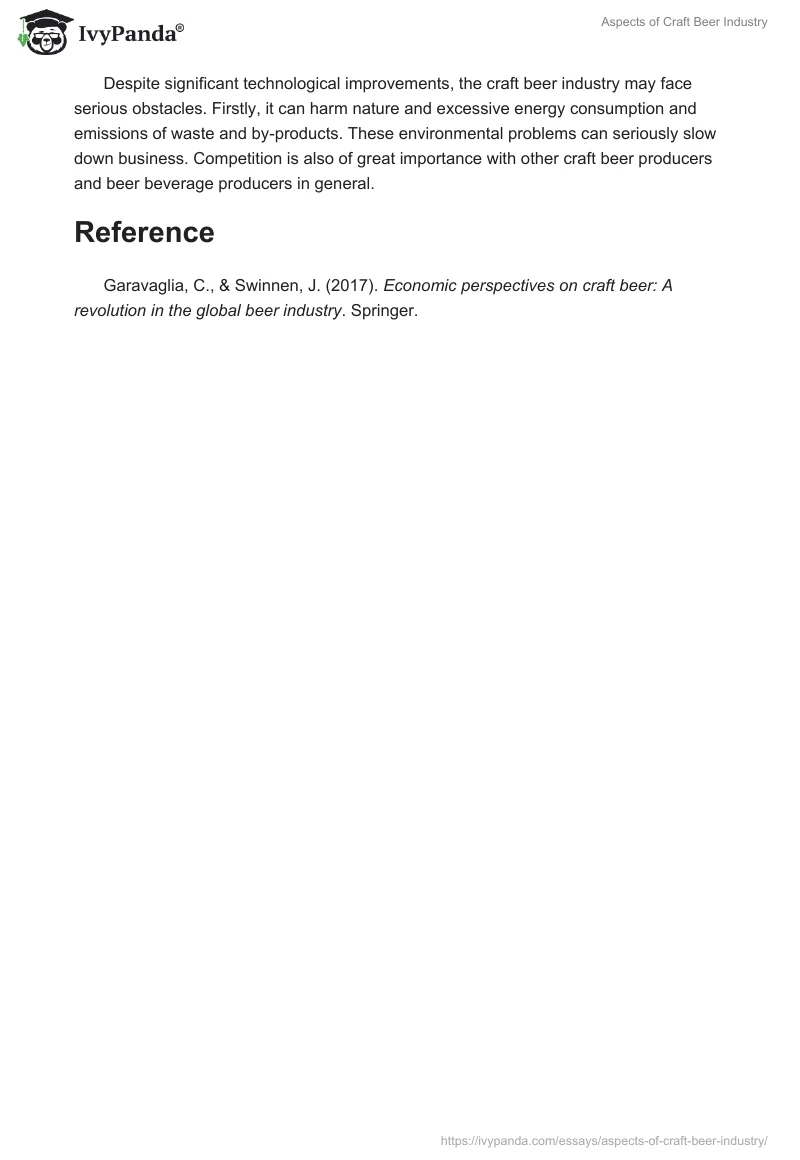In the craft beer industry, as in many others, there are strategically essential components of the macro environment. These valuable components include the degree of increase in total beer consumption, the growth rate of beer exports to various countries, and shifts in the propensity to drink. It is also important to note the importance of such indicators as expanded business management and its dissemination of the potential increase in business costs due to the establishment of the labor law. The broader use of Internet technologies and their implementation, demonstrating an increase in the free access of buyers, also have a significant role.
Competition in the craft beer industry is relatively high due to its increased popularity. This is because an increasing number of craft breweries have begun to introduce more business transactions into their practice (Garavaglia & Swinnen, 2017). The bargaining power and leverage of buyers and rivalry between sellers have the most potent force, and the competitive pressure from makers of substitute products is the weakest. Craft beer producers and customer demand have the most significant impact on the attractiveness of the industry and its potential profitability.
The strategic map of the craft beer industry may be such that bottling plants have limited distribution. Global producers mostly have international distribution and a low or insignificant role in pricing. Moreover, I believe that this strategic group has the greatest advantage. Regional producers are located everywhere while offering prices within a small or high assortment.
Key factors that may determine the success of a start-up craft brewery are access to and mitigation of distribution issues, brand image and ‘craft beer’ niche, implementation of social media for marketing, and sufficient sales volume to achieve scale economies in marketing expenditures.
The first recommendation for a small craft business is a thorough development of a strategy. Risk management is a crucial aspect to avoid future problems. Also of value is a marketing strategy using information technology, since the Internet is used by most of the population and is an effective tool for advertising.
Despite significant technological improvements, the craft beer industry may face serious obstacles. Firstly, it can harm nature and excessive energy consumption and emissions of waste and by-products. These environmental problems can seriously slow down business. Competition is also of great importance with other craft beer producers and beer beverage producers in general.
Reference
Garavaglia, C., & Swinnen, J. (2017). Economic perspectives on craft beer: A revolution in the global beer industry. Springer.


